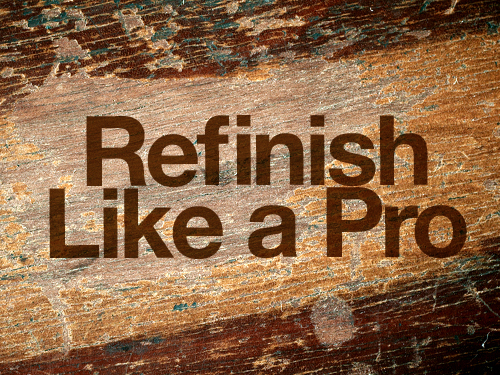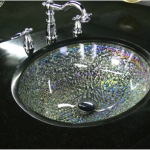The benefit to purchasing solid wood furniture is the fact that it will last you a lifetime if you take good care of it. Even after some dings and dents from the dog, the kids, or just general wear and tear, you can bring you solid wood furniture back it’s original luster and beauty with a refinishing.
The process isn’t extremely simple, but when done properly can breathe new life into a piece before it is handed down, or simply placed right back in those well loved divots on the carpet. Not only can you make your own old pieces new again, but the next time you’re at a thrift store or antique shop you’ll think twice about passing over that old table or desk hidden away, with its minor scuffs or bad paint job.
Once you learn, and eventually master, refinishing, you can turn most solid wood furniture back into a piece you can be proud to display in your home. Thanks to Bob Vila’s masterful tutorial you can do this yourself at home.
In order to refinish your solid wood furniture (and keep your area clean) you’ll need the following tools and supplies:
Paint Stripper
Paint Brushes
Putty Knife
Steel Wool
Mineral Spirits
Sandpaper
Stain of your choice
Rubber Gloves
Painter’s Tape
Drop Cloth / Large thick sheet/towels
Cheese Cloth
Polyurethane, Wax, or Tung Oil
First, apply the stripper as though you were painting the piece of furniture and allow it to work on the current finish. Fifteen to twenty minutes should be enough time, but don’t wait too long, as it will be hard to remove if it hardens.
Use the plastic scraper to remove the finish, and avoid metal, as you could further scratch the wood. Remove as much as possible without forcing it too hard, if you have to, repeat the first two steps again until most all of the finish is gone.
Once all the finish is gone, dab steel wool (Grade #000 is recommended) in the stripper and rub it on the furniture in the direction of the grain. This will remove the very last bits of the old finish.
Move on to a dry piece of fine-grade sandpaper to even everything out. Then apply your stain evenly with a paintbrush, making sure to remove any excess quickly, as your wood will soak the color up quickly after being sanded. Use the cheese cloth to remove any excess and repeat the process in layers for a deeper finish.
To finish the project, apply either polyurethane, wax, or tung oil to protect the wood from future damage.







Mayo Furniture Made in the Heart of Texas
American Made Furniture
Solid Wood: Customization and Attention to Detail